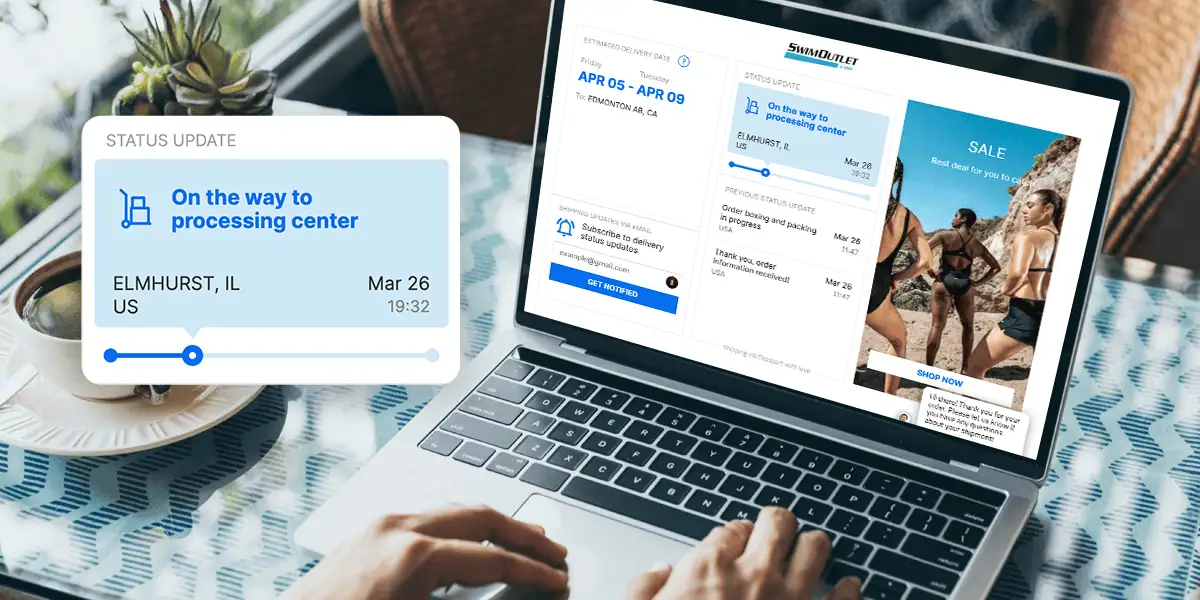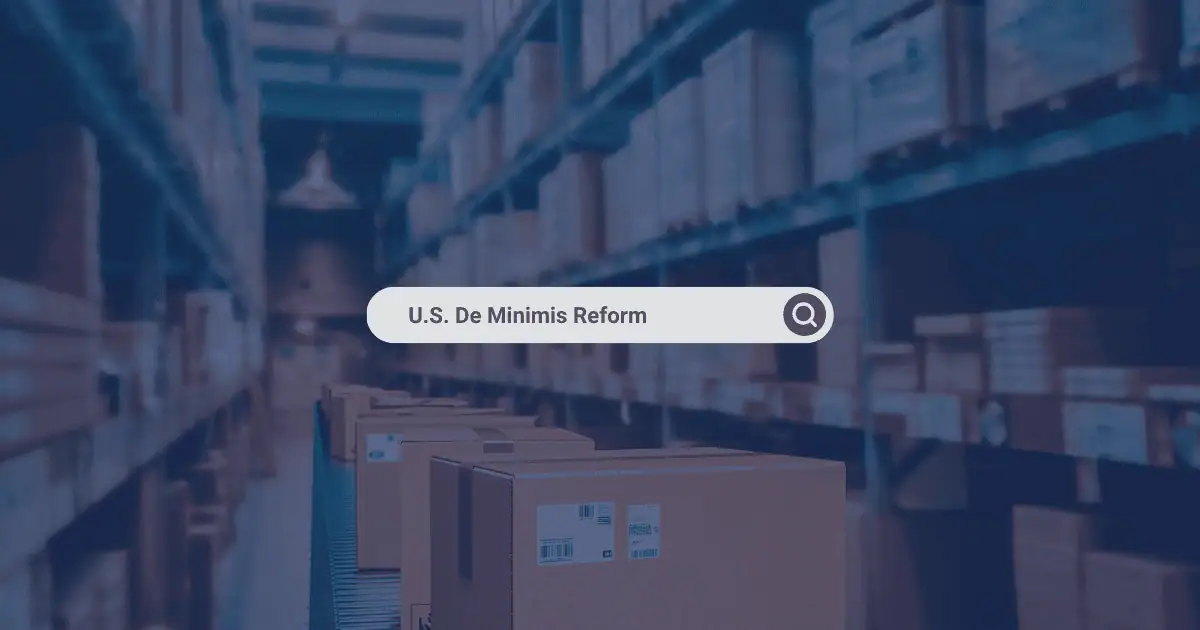International e-commerce merchants are facing a seismic shift in how low-value goods cross borders. A long-standing program that allowed these goods to clear customs duty-free is rapidly closing. As of May 2, 2025, the United States ended its de minimis duty exemption for goods made in China and Hong Kong. This change heralds a new era of stricter customs enforcement and it’s forcing merchants to rethink fulfillment and compliance strategies.
In this article, we’ll break down what the end of de minimis for China means, explore the broader trend of global de minimis reforms (and the risks of not adapting), and most importantly, share actionable strategies for e-commerce brands and 3PLs to stay competitive and compliant. Let’s dive in.
The End of U.S. De Minimis for China/Hong Kong: A Turning Point
On May 2, 2025, a U.S. executive order revoked the duty-free import treatment (de minimis) for products made in and Hong Kong. Under the de minimis rule (19 U.S.C. § 1321 AKA Section 321), shipments valued under $800 could enter the U.S. without incurring duties or full customs entries. This rule, raised from $200 to $800 in 2016, supercharged cross-border e-commerce – an estimated 4 million low-value parcels entered the U.S. each day in 2023, mostly from China. Fast-fashion giants like Shein and bargain marketplace Temu built their U.S. sales on this model, shipping countless packages directly from Chinese warehouses to American doorsteps duty-free.
However, many U.S. brands also built their businesses on this customs clearance program. Through Mexico’s IMMEX program and Canada’s bonded warehouse system, merchants could move finished goods to 3PLs just across the U.S. border and hold inventory in bond, meaning it did not enter the customs territory or pay duties or taxes in Mexico or Canada. When U.S. consumers placed an order, these goods were picked, packed, and shipped, utilizing Section 321 de minimis clearance to avoid paying US duties or fees.
That era has ended. As of May 2, any China or Hong Kong-origin shipment – no matter the value – will require a full customs entry. Now, these packages face steep tariffs and new customs clearance requirements. For commercial shipments, this means paying all applicable duties, including an extra 30% “China tariff” on top of regular rates on packages that would’ve been duty-free before. (Note, this 30% is down from the original 145% China tariff implemented earlier this year.) For mail parcels, carriers must now charge either 54% of the item’s value or a flat $100 per package. In short, that $20 dress from Shenzhen now comes with a hefty import tax bill.
The immediate impact has been dramatic. U.S. Customs and Border Protection (CBP) reported that in the first days after the rule took effect, the daily volume of de minimis entries plunged by 85% – from around 4 million packages a day to just 600,000. Over 110,000 shipments from China/HK were outright rejected for attempting to enter duty-free. Meanwhile, more than 87,000 shipments had to be re-filed as informal customs entries (Type 11) in a single day, indicating a massive pivot to more complex clearance processes.
Cracking Down: Enforcement and Compliance Risks in a Post-De Minimis World
If you ship internationally, it’s time to get your compliance house in order. The end of de minimis for China is just one part of a broader clampdown on small parcel shipments. CBP has made it clear that it is stepping up enforcement on low-value e-commerce imports like never before.
CBP officers are inspecting more small packages than ever. In fiscal year 2023, 85% of all shipments seized for health and safety violations were low-value packages – evidence that bad actors have been exploiting the de minimis channel to ship dangerous or illicit goods. With new rules in place, agencies are doubling down on targeting undeclared, misdeclared, or unsafe items hiding among the flood of parcels. Read more about it here.
For ecommerce merchants, this means greater scrutiny on every package you send. Key areas of enforcement focus include:
1. Undervaluation and Duty Evasion
Declaring a false low value to sneak under thresholds or reduce tariffs has always been illegal, but it was rampant when chances of inspection were slim. Now, CBP is watching. Expect more frequent checks of invoice values against market prices. Authorities are imposing hefty fines, seizures, and even leveraging the False Claims Act to go after parties who were not directly involved in the import. There are more undervaluation schemes being floated than I can count!
2. Misclassification and Origin Fraud
Likewise, mislabeling products with incorrect HS codes or origin to dodge tariffs is in the crosshairs. CBP has ramped up inspections and data analysis to catch these tricks. With China de minimis gone, some shippers might be tempted to route goods via third countries or do light re-packaging to claim a new origin. Be warned: trans-shipment schemes are on CBP’s radar, and the duties apply even if a China-origin product is routed through another country. Getting caught “COO washing” (country-of-origin washing) will bring the hammer down.
3. Missing or bad documentation
When shipping under de minimis, many merchants got away with very minimal paperwork – often just a basic manifest with vague descriptions. Every informal entry now requires a detailed declaration with accurate item descriptions, full harmonized tariff codes, values, importer info, etc. Many e-commerce businesses are not used to classifying products at the 10-digit HTS level or providing structured data for each shipment. There’s a steep learning curve here. Mistakes or omissions can lead to clearance delays or rejections. CBP has also indicated that there will be audits of import records – so keeping meticulous paperwork and valuation support documents is now essential, even for small merchants.
In short, the de minimis party is over. The government is effectively saying: “If you want to ship direct to U.S. consumers, play by the same rules as big importers.” This might sound daunting, but it’s manageable with the right approach. The upside of stricter enforcement is a more level playing field – businesses feel less undercut by untaxed imports, and consumers are better protected from unsafe knockoffs. As a merchant, embracing compliance not only avoids penalties, it can become a selling point.
When Will De Minimis End for All Countries?
While the 2 May 2025 change targets China and Hong Kong specifically, don’t assume other countries are safe from de minimis change. The trajectory is clearly toward tightening de minimis across the board. Lawmakers and customs authorities are rethinking the entire concept of duty-free low-value shipments in light of today’s e-commerce reality.
The full elimination of the U.S. de minimis exemption for products from all countries will occur once customs systems can adequately manage the increased workload. In February 2025, an Executive Order temporarily eliminated de minimis treatment across the board. However, the order was swiftly rescinded after just three days due to significant logistical disruptions, including substantial backlogs at ocean terminals and airports, underscoring that existing systems were not yet ready to handle such a dramatic change effectively.
Despite rolling back this measure temporarily, the Administration clearly signaled that the universal elimination of de minimis would ultimately depend upon technical readiness. Specifically, duty-free de minimis entries under 19 U.S.C. §1321(a)(2)(C) will remain available only “until notification by the Secretary of Commerce to the President that adequate systems are in place to fully and expeditiously process and collect duty revenue….” While the specific date remains uncertain, the direction is unmistakable: once customs infrastructure is adequately upgraded, the duty-free exemption currently available for low-value shipments will permanently end.
In Washington, there are already bipartisan proposals to overhaul or even eliminate the $800 de minimis threshold for all countries in the coming years. For example, one high-profile House bill currently being debated would repeal the $800 exemption outright by 2027. It also threatens steep civil penalties – $5,000 for the first violation and $10,000 for repeat offenses – for anyone caught abusing low-value import rules. In plain terms, that could mean if you are splitting orders into multiple sub-$800 packages to dodge duties after de minimis is curtailed, you’d face five-figure fines per shipment.
Regulators aren’t waiting for Congress, either. CBP has been working on regulatory changes to get more data on low-value shipments and close gaps. In early 2025, CBP proposed the Entry of Low-Value Shipments (ELVS) rule, which would require additional advance electronic data for all de minimis shipments and mandate that these entries go through CBP’s automated system (ACE) rather than just simple manifests. The goal is to give customs officers better visibility – to “identify and interdict high-risk shipments” hiding among the tide of packages. Think of it as forcing a digital paper trail on every parcel.
All these shifts mean one thing: merchants must adapt or risk being left out of key markets. The “easy” path of drop-shipping globally with minimal compliance is fading. But there are silver linings – new models are emerging to thrive in this environment. Let’s explore some strategies that forward-thinking e-commerce businesses are already implementing to mitigate the impact of these reforms.
Strategies for Merchants: Adapting to the New Normal
Facing these changes can be intimidating, but savvy merchants are finding ways to turn challenges into opportunities. Here are some direct, actionable strategies to consider for your e-commerce operations:
- Hold Inventory Locally and Fulfill In-Country
One surefire approach is to position your products in key markets and fulfill orders locally. This means moving inventory to a 3PL or fulfillment house in the U.S.. By importing unsold inventory, your declared value for customs is much lower than the retail sale price, which mitigates the impact of increasing duties and fees. Some merchants who relied on the U.S. de minimis are now pivoting to a hybrid model – holding their top 20% of products locally, while still leveraging direct-to-consumer shipping for slower-moving SKUs. If you have significant volume in a country, run the numbers: the savings can often outweigh the warehousing costs.
- Establish a B2B2C Model with a Domestic Subsidiary
If local fulfillment doesn’t work for you, consider a B2B2C strategy. This typically involves setting up a U.S. entity that buys from your parent company and sells to end consumers. For example, your parent company sells orders to your U.S. subsidiary at a transfer price; the subsidiary imports those goods (paying duties on that value); and U.S. customers order from the subsidiary. Financially, you’re basically shifting to recognize revenue in the U.S. entity (minus a transfer price to the parent). There are tax and accounting considerations, but many brands are exploring this structure – separating the cross-border B2B import from the B2C retail. By doing this, you’ll comply with all import regs (since your U.S. arm is the importer on record).
Aside from these major strategies, also look at optimizing your compliance processes. For example, you might utilize an internationalization provider who can surface all duties, taxes, and fees at checkout so there are no surprises. And don’t overlook the basics like HS Classification. A small fix today can save you headaches down the line.
The Path Forward
The end of de minimis treatment for China represents a watershed moment for global e-commerce, signaling an era of increased scrutiny, stricter data requirements, and higher duties and fees on cross-border shipments. Although this shift presents significant challenges, proactive brands have an opportunity to gain a competitive edge by adapting swiftly. Merchants should urgently reassess their international shipping strategies, address compliance gaps, and implement forward-thinking solutions such as in-country enablement to optimize costs. By leaning on internationalization providers, brands can effectively navigate these complexities and turn regulatory compliance into a strategic advantage—delivering faster, transparent, and seamless customer experiences. In the rapidly evolving e-commerce landscape, agility and preparedness are critical; merchants who adapt now will not only protect their businesses but will be positioned to thrive in this new regulatory environment.
Ready to future-proof your international shipping? Passport is here to help you navigate these complexities, ensuring your U.S. market entry remains profitable, compliant, and worry-free.
Want to learn more? Join us live Friday, May 16th at 9:00am EST / 14:00 UK time as we explore the impacts of the de minimis change and how brands can compliantly mitigate impacts. Register here.
Want to discuss potential solutions? Reach out to Neoshi Chhadva, General Manager of U.S. Solutions, neoshi@passportglobal.com.
This article is provided for informational purposes only and does not constitute legal advice. Merchants are advised to consult with their customs broker and legal counsel to ensure compliance with all applicable laws and regulations based on their specific circumstances.
Authored by Thomas Taggart
Head of Global Trade | Passport
Thomas Taggart is a cross-border commerce leader with more than 20 years of experience in international shipping and regulatory affairs. As the Head of Global Trade, Thomas helps ecommerce brands go global by simplifying international trade, tax, and product compliance issues. Prior to Passport, he brought international shipping solutions to market through multiple roles in UPS’s product development organization.











